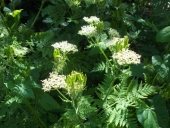








bee well




Medicinal herbs, kitchen herbs, perennial edibles and berries: https://mountainherbs.net/ grown in the Blue Mountains, Australia




Idle dreamer








Best regards - OD
"This is it, but if you think it is, then it isn't anymore..."








Jane
 2
2




O. Donnelly wrote:Check out Dave Wilson's Nursery on YouTube. They have an entire collection of videos on backyard orchard culture, where they discuss pruning and training fruit trees to a small size where you can work the trees from the ground. I'm addicted to their videos.
"The rule of no realm is mine. But all worthy things that are in peril as the world now stands, these are my care. And for my part, I shall not wholly fail in my task if anything that passes through this night can still grow fairer or bear fruit and flower again in days to come. For I too am a steward. Did you not know?" Gandolf




Idle dreamer
 1
1




Medicinal herbs, kitchen herbs, perennial edibles and berries: https://mountainherbs.net/ grown in the Blue Mountains, Australia
 4
4




![Filename: ESPALIER-APPLES.jpg
Description: ESPALIER APPLES [Thumbnail for ESPALIER-APPLES.jpg]](/t/63450/a/48357/ESPALIER-APPLES.jpg)
 1
1




Best regards - OD
"This is it, but if you think it is, then it isn't anymore..."








'What we do now echoes in eternity.' Marcus Aurelius
How Permies Works Dr. Redhawk's Epic Soil Series





 1
1




List of Bryant RedHawk's Epic Soil Series Threads We love visitors, that's why we live in a secluded cabin deep in the woods. "Buzzard's Roost (Asnikiye Heca) Farm." Promoting permaculture to save our planet.












'What we do now echoes in eternity.' Marcus Aurelius
How Permies Works Dr. Redhawk's Epic Soil Series




It's time to get positive about negative thinking  -Art Donnelly
-Art Donnelly

| I agree. Here's the link: http://stoves2.com |






